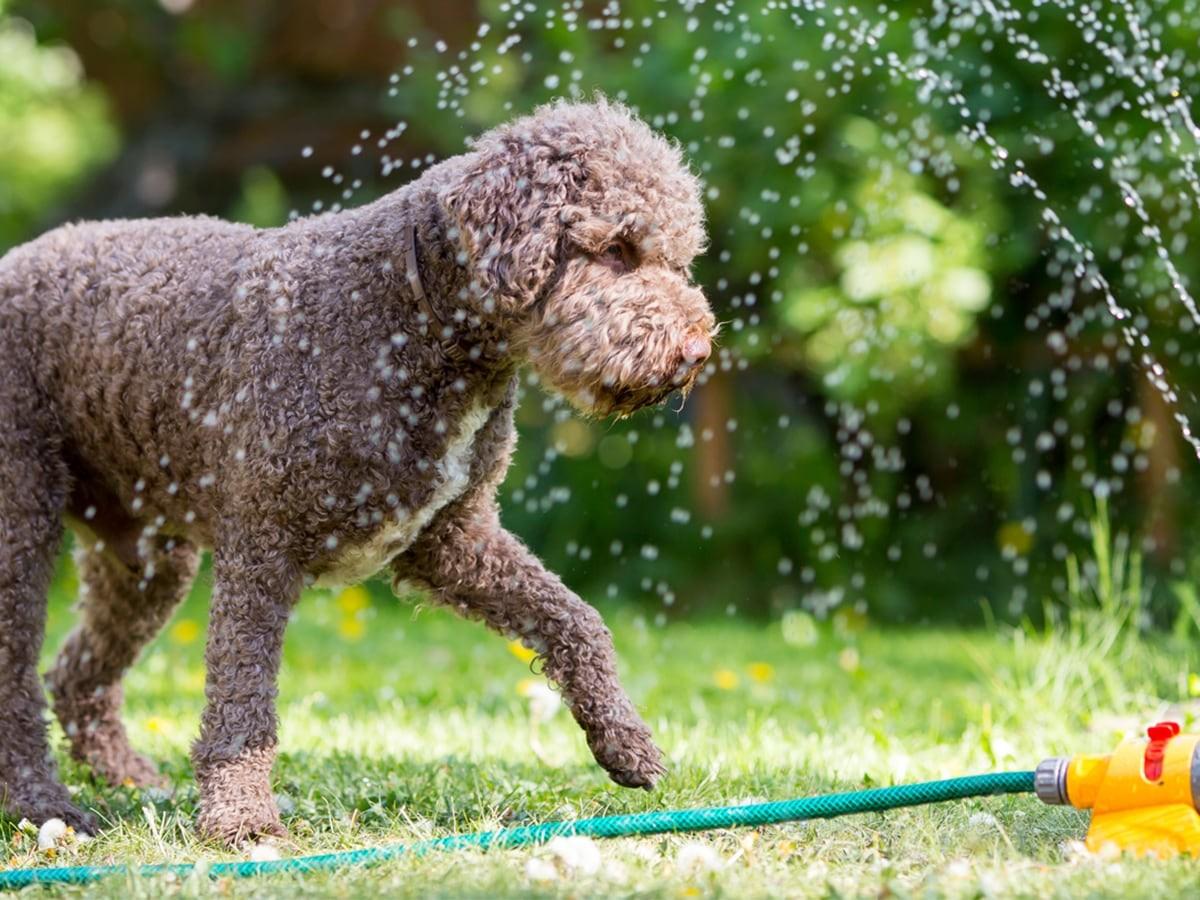Humidity impacts every part of your pet’s body including their ability to cool down. So as a pet parent, it’s important that you take the humidity level into account before leaving for the day with your pet. Even if you check the temperature, you may notice that it feels much hotter once you step outside with your pet. This is because a high level of humidity can cause it to feel much hotter outside.
The Temperature-Humidity Index (aka the Heat Index) is a term used to express the degree of discomfort caused by the combination of temperature and humidity in warm weather. The score ranges from 43 to 103. When it's humid, perspiration can't evaporate as quickly, which means it's more difficult to cool down. Even if the air temperature is 90 degrees Fahrenheit, the heat index can still reach up to 105 degrees.
This phenomenon is extremely important to consider because dogs are even more sensitive to heat than we are. Their internal temperatures are higher than ours, so air temperatures will feel warmer to them than to us. Our furry friends dissipate heat by panting and sweating through their paws, and that’s it! And if your dog gets too hot, they can suffer from heat exhaustion; when their body temperature reaches a point above their normal temperature and they can no longer regulate their own body heat.
At-risk dogs
Not all breeds tolerate the same amount of heat, so there is no exact guide or measurement we can provide to help you determine how much heat your dog can handle safely. But, certain factors do increase your dog’s risk of heat exhaustion. Dogs with the greatest risk for heat-related illnesses are:
Preventing heat exhaustion
Prevention is the best way to keep your pet safe when it is very humid. You should use precautions to avoid heat exhaustion if the temperate is above 90 degrees, or if the heat index is greater than 72. The easiest and most effective ways to prevent heatstroke in your pet are listed below.
Check the air temperature and humidity/heat index before letting your dogs outside. Even if the temperature looks low enough, high humidity levels can make it unsafe for your dog to be outside.
Don’t leave your dog in a parked car, even if the windows are down. Vehicles sitting in the sun can heat up quickly. With no way out, dogs can quickly suffer heat exhaustion even if they’re only in the car for a few minutes.
Avoid walking your dog or any strenuous exercise during peak temperatures throughout the day. Instead, walk your dog early in the morning or in the evening. Bring water with you and take breaks in the shade if needed.
Make sure your pup doesn’t stay outside for too long! Sometimes dogs will want to continue playing outside all day even when it’s not safe for them to be out there. So it’s your job as their pet parent to make sure they come back inside when they need to.
Keep your dogs in cool area. Use your AC, setup fans, or close the blinds to prevent the sun from heating up the room too much.
Make sure your dog has water readily available and leave it in a shady area. Drinking water is one of the main ways dogs regulate heat, so it’s very important that their water bowls stay full!
Be aware of your dog’s medical history. Puppies, senior pets, or pets that have conditions like obesity, breathing problems, or heart disease, are more susceptible to the heat.
Signs of heat exhaustion and heatstroke
Whenever you're outside, on a hot day, with your dog, make sure to watch out for any signs of heat exhaustion or heatstroke. The humidity can make it difficult for dogs to cool down on their own. Common signs of heat exhaustion and heatstroke to look out for are:
Excessive panting and/or difficulty breathing
Dehydration (dry nose, visibly tired, excessive panting, sunken eyes)
Excessive drooling
Color change in gums
Lack of urine
Muscle tremors (shivering or shaking)
Rapid pulse
Lethargy or weakness
Dizziness
Treating heat exhaustion
If you dig starts to display any of these signs, take them to a cooler area as soon as possible. Take them inside into an area with AC or into a shaded area. Do not immediately give them cold water! Cooling them down too quickly can be just as dangerous letting their temperature get too high.
Put them next to a fan to help them dry off and get some airflow into their coats. Check their temperature every few minutes to check that it's returning to normal. Give them small amounts of water; room-temperature or lukewarm water, while they cool down.
Once their temperature is at 103 degrees Fahrenheit, you can turn off the fan and stop giving them the water. Even if your pup seems fine, keep a close eye. There are always potential complications that can come from heat exhaustion. Call your vet and let them know what happened.
If your dog passes out or becomes sick, take them to an emergency veterinary hospital right away.
Key takeaways
The summer months may bring lots of fun in the sun, but it’s important to think about your pet’s health in the heat! Always make sure your pets have ample shade and water when they are outside and keep an eye on them to make sure they’re not showing any signs of heat exhaustion. If you do notice them acting differently, take them inside and cool them down. If they are showing any signs of heat exhaustion, give your vet a call!
www.petplace.com
www.petsittinglakemary.com
www.foxweather.com
www.humanesociety.org
